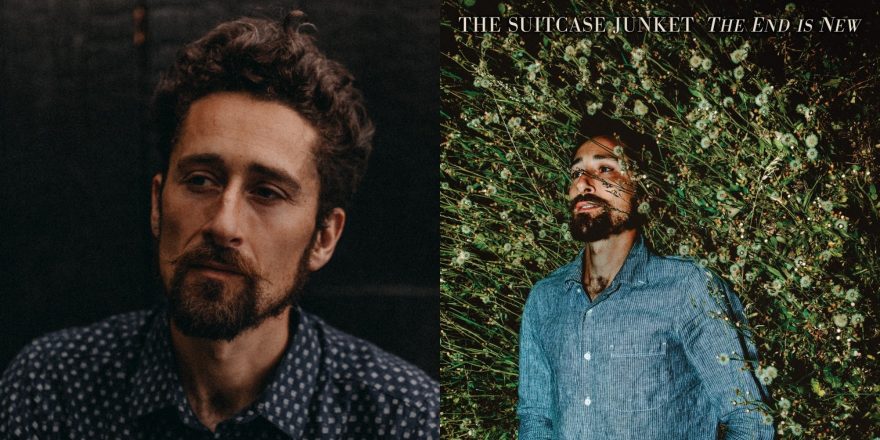This time last year I was probably waking up in my van at a rest stop off the highway somewhere, wondering where I was and hoping to find a good greasy spoon diner nearby. Feels like a decade ago now. I’m usually out on tour around 200 days a year, playing music and singing songs to roomfuls of people. It’s a hard job, but a great living. All of the tedium and stress of driving thousands of miles alone, navigating my way to the gig on time, loading in the gear, setting up, sound checking, sneaking in a meal, hustling the merch, breaking down, and loading out — it all melts away when I’m suspended in that magical moment of alchemy on stage performing to an audience that’s really there with me and giving back: listening, dancing, singing, feeling.
I love it and I miss it. I’ve been lucky in a lot of ways during this pandemic, though. In particular, I had this new album to finish which was a welcome distraction from the tragedy and madness of the year. The title of the album, which is also the title of this little written piece here, is equal parts doomy and hopeful. All the songs were written before the quarantines began, but they started taking on new layers of meaning in this rapidly changing world.
Every end is a beginning. It’s a simple idea, but a deep one. When all of my work and most of my plans for the year were canceled I set my mind to seeking out some silver linings, a fresh start of some kind. I ordered chicks, I planted the garden, I painted the house, I made videos for this new album, I gutted the barn to turn it into a music studio, and I delved back into the roots of what this musical project, The Suitcase Junket, is all about. Salvage. There’s something deeply satisfying about finding new uses for old forgotten things. It began about ten years ago at a time when I had no money and little work, so the salvaging was pretty much a necessity. Every single instrument in “the band” was found or built. The guitar was rescued from a dumpster, the suitcase I started with was an old accordion box I had on hand, and the foot drums were pots and cans salvaged from a scrap metal dumpster and mounted on frames I built out of broken chair parts. At one point I remember I wanted the sound of a cello on a song I was recording, so I built a one-string cello-like instrument out of a three gallon tin bucket, a broomstick, and some hanging wire. These old lost pieces of wood and metal were at the end of their days and headed toward the landfill or the furnace. Instead of that grim fate, they traveled the world over with me making music for the past 10 years.
A lot of my songwriting can be described as salvage work, too. I’m constantly collecting shiny words and phrases that I find as I move through the world with a sort of magpie curiosity. Loss and new beginnings are a frequent theme that I seem to keep coming back to. In the early days it was mostly broken-hearted ballads and bluesy lamentations, but I also had some more offbeat and creative takes on the subject. In particular I’m remembering a fanciful song I wrote that was all about an old bone I found in the woods and turned into a flying magical creature. Speaking of flying creatures, the imagery for the album art back then was on a similar bent: inanimate objects with wings. One of the reasons I liked these designs, aside from their general visual appeal and totemic kind of force, was that the life of the object was implied merely by the addition of the wings. That simple animating feature all of a sudden gave the hammer, a tool that can smash apart or bind things together, a backstory and life of some kind. I still use a lot of this imagery in the visual art I make, which tends to be assembled out of discarded wood lath and old retired tools. I consider this particular salvage to be a form of alchemy. You go to the dump and collect your materials, you arrange them in a pretty way and you sell them for money. The equation for my philosopher’s stone is pretty simple: (wood+steel+time) x (energy+practice) = gold.
The stories and themes on this new record are a bit heavier than those of the past. I was trying to reflect the world around me more than I usually do in writing this batch of tunes and the term “doom-folk” sprang out of the general mood of these songs. “Black Holes and Overdoses” comments on the relentlessness of the 24-hour news cycle and the endless scrolling of online media feeds while “Can’t Look Away” stares down the destructive impact of our human nature and how it has led to the overuse of earth’s resources.
“We keep looking for more to burn, digging deeper down in the earth.
Yeah, we’re hooked and it’s gonna hurt when we lose from winning.
Won’t stop till we use it up and somehow it ain’t ever enough,
even seeing how it’s killing us when we lose from winning.”
“And Then There Was Fire” matter-of-factly mentions the increased frequency of wildfires while admitting, “I don’t wanna be the way I am, I try my best to change me everyday to make myself a little bit better.” And this is where the salvage comes back in. We have the agency to make ourselves do better. Yes, we are presiding over a mass-extinction event on a global scale that we are largely responsible for causing, but we are curious and clever enough creatures to have realized what we’re doing wrong and how to fix it. What we need now is action. It’s going to be uncomfortable and difficult, but necessary for our own survival. This is going to be the biggest salvage operation the earth has ever seen. I believe we’re capable of it, but we’re already behind. In my opinion, our first step should be to conserve wetlands and forests. Right now the Pantanal, the world’s largest tropical wetland, is on fire but no one’s talking about it. We need to refocus our energy on recognizing the ways that we’re impacting the earth and changing our behavior as a species. After all, it’s our only home — and I rather like it here.
(Photo Credit: Joanna Chattman)



